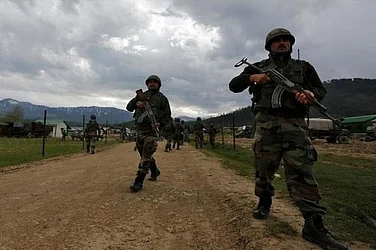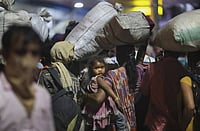Haryana has so far reported 299 coronavirus cases. Twelve districts in the state have moved to the ‘Green Zone’ and nine have been declared coronavirus-free. In an interview to Outlook’s Rajat Mishra, Deputy Chief Minister Dushyant Chautala tells how Haryana has managed to bend the Covid-19 curve and what is the future plan. Excerpts:
Many states want the lockdown to be extended till May 16. What is your view on it?
Yes, there is a need that in some places the movement should be restricted. Even within a state, there should be restrictions on moving from one district to another. In Haryana, we will likely be extending lockdown only in areas which are in red zone, for example Gurgaon, Sonipat, Panipat, Panchkula, etc. Every state has different problems. So, you can't have one solution. So, as far as the lockdown is concerned, I think states should make their own decisions on enforcing restrictions, taking cognizance of the central government decision.
Around eight or nine districts in Haryana have not reported cases in last 14 days? So, what is the future strategy for these districts?
It is high time that we maintain social distance and keep such people in quarantine who might become carriers in the future. Also, people need to get back to work and, therefore, imposing a nationwide lockdown for X number of days is not a solution. The pandemic needs to be dealt with in various ways. First, sanitisation needs to be done. Second is use of mask, gloves etc. We have to learn from countries like Sweden. They have never gone into a lockdown, but they have saved themselves. The number of cases there is relatively less. Also, we might face difficulties in the coming months due to diseases like malaria and dengue. We must fight that simultaneously.
If the lockdown is lifted in a staggered manner on May 3, is Haryana prepared for it?
I think we are tackling this in very good manner, but we still need to take more precautions. For districts like Gurgaon and Faridabad, which are highly populated, there needs to be a different action plan. We need to give relief to the construction sector. We have also permitted marginal shopkeepers to open their stores. But yes, we have to be cautious about opening schools, colleges, and malls.
How does Haryana plan to compensate for the revenue loss due to the lockdown?
Yes, revenue loss is a challenge for everybody. In my opinion, the government needs to make a plan to help industries and to revive states in a proper manner.
Are you in favour of state specific grants based on number of cases being reported from the state?
You cannot divide the country on the basis number of cases. I think the government should provide more help to states that have done well to contain Coronavirus. There has to be a centralised package for each state. The GST refund should also be extended from five years to 10 years.
Haryana is an agrarian state. What is your strategy to procure grains and agricultural produce during this season?
There are two Rabi crops this season—mustard and wheat. We have increased the number of purchase centres three times from last year. Last year, we had only 67 centres for mustard; this year we have 148. Last year we had 477 purchase centres for wheat; this year this we have approximately 1500. So this is how we segregated the mandis. We have a good mandi system with the wholesalers helping us, moving around the state purchasing from the concerned centres. Data from last seven days shows we have procured more wheat than we have ever procured in the previous years.
Haryana has done a good job in containing the pandemic…
As of April 26, we had total 294 patients including 14 Italian tourists. 192 people have been discharged and there have been only three deaths. So, fatality rate is 1.02 per cent, and recovery rate is 65.30 per cent. Our doubling rate is much better then national doubling rate at 18 days. And now we have only 99 active cases. Our health department and police are doing a very good job. And that's why we have been able to save our state.






















.jpg?w=200&auto=format%2Ccompress&fit=max)



